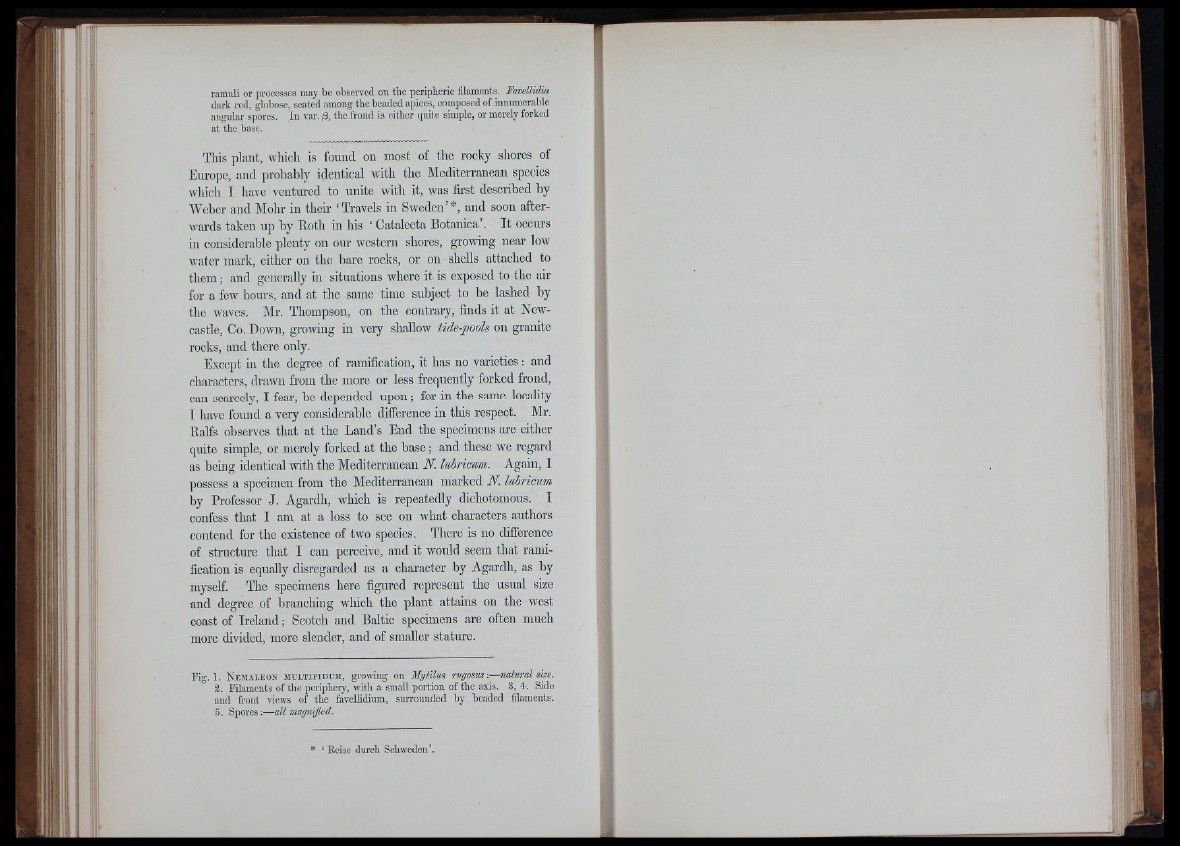
ramuli or processes may be observed on tbe peripheric filaments. Favellidia
dark red, globose, seated among the beaded apices, composed of innumerable
angular spores. In var. f t tbe frond is cither quite simple, or merely forked
at the base.
This plant, wliicli is foniid on most of the rocky shores of
Europe, and probably identical with the Mediterranean species
wliicli I have ventured to unite with it, was first described by
Weber and Mohr in tlieir ‘Travels in Sweden’*, and soon afterwards
taken up by Rotli in his ‘ Catalecta Botanica’. It occurs
in considerable plenty on our western shores, gromng near low
water mark, either on the bare rocks, or on shells attached to
them; and generally in situations where it is exposed to the air
for a few hours, and at the same time subject to be lashed by
the waves. Mr. Thompson, on the contrary, finds it at Newcastle,
Co. Down, groiving in very shallow tide-pools on granite
rocks, and there only.
Except in the degree of ramification, it has no varieties: and
characters, drawn from the more or less frequently forked frond,
can scarcely, I fear, be depended upon; for in the same locality
I have found a very considerable difference in this respect. Mr.
Ralfs observes tbat at the Land’s End the specimens are either
quite simple, or merely forked at tbe base; and these we regard
as being identical with the Mediterranean N. lubricum. Again, I
possess a specimen from the Mediterranean marked N. lubricum
by Professor J. Agardli, which is repeatedly dichotomous. I
confess that I am at a loss to see on what characters authors
contend for the existence of two species. There is no difference
of structure that I can perceive, and it would seem that ramification
is equally disregarded as a character by Agardh, as by
myself. The specimens here figured represent the usual size
and degree of branching which the plant attains on the west
coast of Ireland; Scotch and Baltic specimens are often much
more divided, more slender, and of smaller statoe.
Kg. 1. N em a l eo n m u l t if id u m , growing on Mytilus rugosus-.— natural size.
3. Filaments of tbe periphery, witb a small portion of the axis. 3, 4. Side
and front views of the favoUidium, surrounded by beaded filaments.
5. Spores;—all)
* ‘ Keise dm-cb Schweden’.